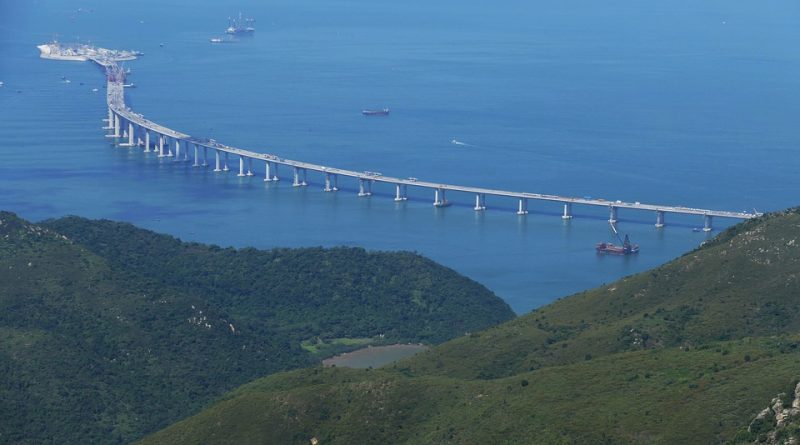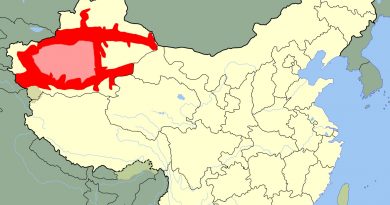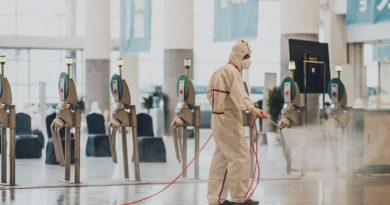Building Bridges of Disconnect
By Sam Adams
Staff Writer
This week, China unveiled an infrastructural feat of incredible proportions, the longest sea-crossing bridge ever constructed. Originally slated for completion in 2016, the bridge has been plagued by delays, budget overruns, and safety concerns, according to The Guardian. Over the course of construction since 2009, nine workers have died and more than 200 have been injured, as reported by Fortune.
Open to public traffic this past Wednesday, the bridge used more than 400,000 tons of steel, and was built to withstand super typhoons and 8.0 magnitude earthquakes. City Lab reports that the super-structure links the Chinese Mainland, city of Zhuhai, to the cities of Hong Kong and Macau, the latter two being semi-autonomous in accordance to the “One Country, Two Systems” policy.
The policy states that, while Macau and Hong Kong remain a part of China, each city manages its own economy, has an independent judiciary system, and retains independent ties to select international organizations, such as the World Trade Organization and the Olympics. The view in these semi-autonomous regions is that the bridge is more of a political tool than an economic one. Beijing has countered this sentiment by expressing that the bridge will economically benefit all parties involved.
In order to counter the technological powerhouse in Silicon Valley, China has sought to create its own version of a Greater Bay Area. CNN reports that the importance of the bridge to the newly linked regions is key element for connecting the 21,800 square mile area, made up of 11 cities and over 68 million people. The new bridge is in an effort to link the region’s leading economies and contribute to the establishment of this economically prestigious region.
Democratic organizers in Hong Kong have been quick to shut down this claim by the Chinese government. Claudio Mo, a pro-Democracy legislator, was quoted saying, “It links Hong Kong to China almost like an umbilical cord. You see it, and you know you’re linked up to the motherland.” Additionally, Fortune reports, many see the Chinese move as a way to undermine the territorial integrity of Hong Kong. A City Lab writer based in Hong Kong described the bridge as “a piece of infrastructural propaganda to announce the unity of China and her former colonies.”
While the bridge itself is an architectural feat, another transit connection from mainland China to Hong Kong is under construction in the form of a high-speed rail link. This has also agitated Hong Kong, as China plans to open an immigration center in the heart of the city rather than at border crossings. Al Jazeera reports that the opening of Chinese Immigration Centers in accordance with the new rail link is a further Chinese attempt to “blur the border” between the states.
Another concern regarding the bridge is that of utility. Reports acquired by the Guardian indicate that Hong Kong lawmakers forecast traffic on the bridge will fall by 25 percent due to competition from new bridges as well as already existing means of transit. Eddie Chu, a lawmaker in Hong Kong asserts that the bridge is basically redundant. What is more, residents of Hong Kong citizens will be obligated to buy special permits to cross the bridge or be condemned to shuttle buses running at HK$10 each way. An additional fear is the bridge’s potential to be swamped by Chinese tourist. Last year, Hong Kong saw 56.7 million tourists, compared to that of 37.6 million to the UK. This number is more than 7.5 times the population of Hong Kong itself, as CNN further reports.
Most controversy regarding the bridge comes from the political and economic tension between the semi-independent Hong Kong/Macau and mainland China, with little respect and attention to the environment. The Pearl River Delta, the setting for the Greater Bay Area, is home to the Chinese White Dolphin, whose numbers have plummeted in recent years. Many believe that the bridge, as well as other construction throughout the delta, like the expansion of Hong Kong’s airport, could be the lethal blow to this endangered species.
Although officially open to the public, all sides continue to espouse criticism towards the bridge. For the Chinese White Dolphin, the consequences of the superstructure could be lethal, for Hong Kong and Macau, they could mean a decrease in sociopolitical freedoms, and for China, a blunt exertion of power.



